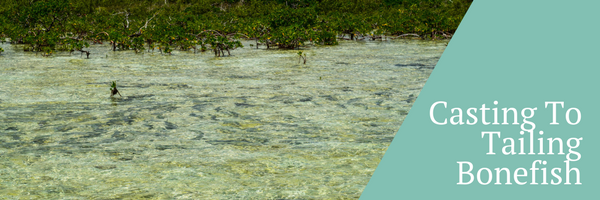Casting to a tailing bonefish is actually quite easy. These fish are content, less likely to spook, and busy sifting through the sand. This makes it a cinch to present your fly without raising any suspicions, especially if you relax, take your time and focus on making the best possible cast. Following are a few tips to help you make the most of these prime opportunities.
Calm Down
Everyone is happy when they’re around food and so are bonefish. Don’t let the excitement of seeing this perfect opportunity to cast your fly ruin the chance of catching a bonefish. It is important not to lose your composure and to remain calm and quiet. Chances are they don’t even know you are around. Ideally, you want to be able to present your fly quickly but only if you can present it well so take your time and determine your next move. Either way, if the bonefish are happy, you should be too. Take a deep breath and don’t let blowing a shot discourage you, there are plenty more fish.
Pick Your Target
Take a minute to consider the group overall. You don’t want to get tunnel vision and cast in the direction of the very first fish you see. Identifying other fish in the area is important for ensuring that none of them get spooked. While you may be able to land your fly directly in front of the fish you initially spotted, scaring every other bone in the area will prove counterproductive. When these fish scatter, your target will flee the scene as well. If possible, try honing in on the biggest and best-looking fish in the group. This will likely be the one that’s easiest to see despite the glare.
Identify The Best Position
Spotting a tailing fish can give you a rush of adrenaline that makes instant actions seem all too necessary. It’s far better, however, to assume the best position for presenting the fly. You want your fly to track away from the bonefish, instead of towards him. This might mean having to shift your shoulders, move your feet or even slightly alter the position of the boat.
Above all things, stay calm. Remember that these bones are happy and actively engaged. They’ll be paying far more attention to their meal than you. This will give you ample time to assess the conditions, plan your cast and land it perfectly.
In case you missed out first tips: Tailing Bonefish? Take a deep breath









